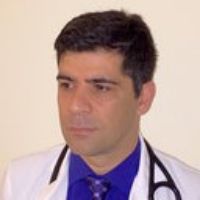(Targeted) Diagnosis of Arrhythmias and Sudden Cardiac Death
A special issue of Journal of Clinical Medicine (ISSN 2077-0383). This special issue belongs to the section "Cardiology".
Deadline for manuscript submissions: closed (31 March 2024) | Viewed by 3870
Special Issue Editor
Interests: heart failure; pacemakers; cardiac electrophysiology; atrial fibrillation; electrocardiography; cardiomyopathies; clinical cardiology; chronic heart failure; interventional cardiology; cardiovascular medicine
Special Issue Information
Dear Colleagues,
Arrhythmias and sudden cardiac death are major causes of mortality worldwide. Early and accurate diagnosis of these conditions is crucial for effective management and prevention of fatal outcomes.
This Special Issue of the Journal of Clinical Medicine focuses on the targeted diagnosis of arrhythmias and sudden cardiac death, highlighting recent advances in the field. It covers a wide range of topics, including novel imaging techniques, non-invasive electrophysiology testing, and advanced genetic analysis. These cutting-edge approaches provide new insights into the pathophysiology of arrhythmias, facilitating personalized diagnosis and treatment. The use of artificial intelligence and machine learning in arrhythmia diagnosis and risk stratification, improving accuracy and efficiency, will also be discussed.
This Special Issue will be an invaluable resource for cardiologists, electrophysiologists, and researchers involved in the diagnosis and management of arrhythmias and sudden cardiac death, providing a comprehensive overview of the latest developments and trends in arrhythmia diagnosis, as well as practical guidance for clinicians. The high-quality content, provided by internationally renowned experts from various institutions, will make this Special Issue a must-read for anyone interested in the field.
Dr. Yitschak Biton
Guest Editor
Manuscript Submission Information
Manuscripts should be submitted online at www.mdpi.com by registering and logging in to this website. Once you are registered, click here to go to the submission form. Manuscripts can be submitted until the deadline. All submissions that pass pre-check are peer-reviewed. Accepted papers will be published continuously in the journal (as soon as accepted) and will be listed together on the special issue website. Research articles, review articles as well as short communications are invited. For planned papers, a title and short abstract (about 100 words) can be sent to the Editorial Office for announcement on this website.
Submitted manuscripts should not have been published previously, nor be under consideration for publication elsewhere (except conference proceedings papers). All manuscripts are thoroughly refereed through a single-blind peer-review process. A guide for authors and other relevant information for submission of manuscripts is available on the Instructions for Authors page. Journal of Clinical Medicine is an international peer-reviewed open access semimonthly journal published by MDPI.
Please visit the Instructions for Authors page before submitting a manuscript. The Article Processing Charge (APC) for publication in this open access journal is 2600 CHF (Swiss Francs). Submitted papers should be well formatted and use good English. Authors may use MDPI's English editing service prior to publication or during author revisions.
Keywords
- arrhythmia
- sudden cardiac death
- diagnosis targeted therapy
- risk stratification
- electrocardiography (ECG)
- electrophysiology
- implantable cardiac devices
- personalized medicine
- precision medicine
- cardiac imaging






